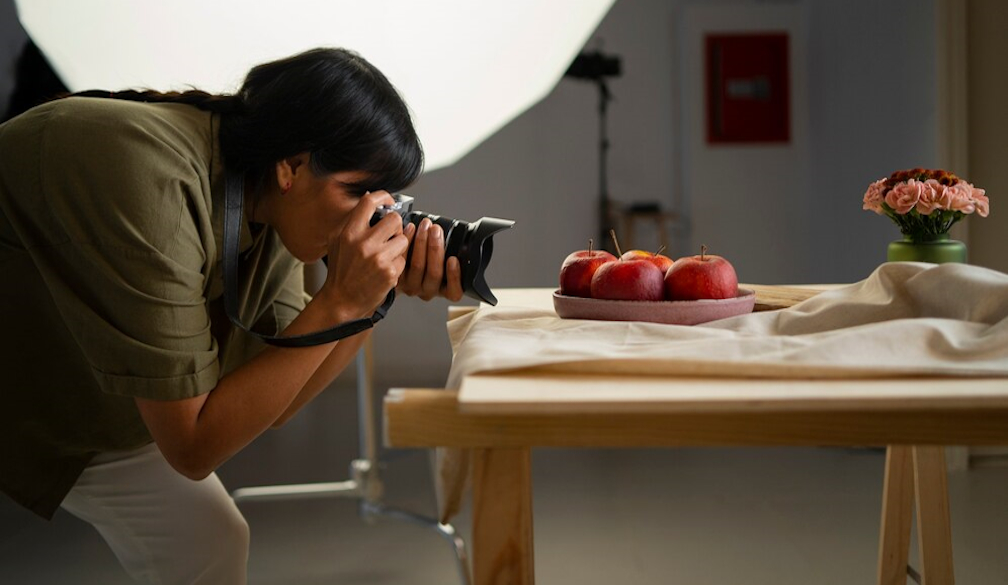The Pros and Cons of Using Natural Light in Food Photography

Food photography is an art form that requires careful attention to detail and the ability to capture the essence of a dish in a single image. One factor that can greatly impact the outcome of food photography in Sydney or anywhere else is lighting.
In recent years, there has been a growing trend towards using natural light instead of artificial lighting sources in food photography. While natural light certainly has its benefits, it also comes with its own set of challenges. In this featured post, we will explore the pros and cons of using natural light in food photography while exploring what a Sydney-based food photographer prefers to do.
Pros of Using Natural Light
1. Produces Soft and Beautiful Lighting
Natural light has a softness and warmth that artificial lights often cannot replicate. It brings out vibrant colours and creates a more appealing mood in food photographs.
2. Provides Greater Depth and Texture
With natural light, photographers can capture the subtle textures and shadows present in dishes, enhancing their overall aesthetic appeal.
3. Creates Realistic Colours
Natural light represents colours much more accurately than artificial lighting does. It allows photographers to showcase the true hues of ingredients, making them look more vibrant and appetising.
4. Saves Time on Set-Up
When shooting with natural light, there is no need for complicated equipment or time-consuming set-up processes. This makes it an ideal choice for photographers who want to keep their shoots simple and focused on capturing stunning imagery.
Cons of Using Natural Light
1. Limited Control over Lighting Conditions
The biggest challenge when working with natural light is its inconsistency. Factors such as weather conditions and changes in daylight throughout the day can greatly impact the lighting in your photographs, making it difficult to achieve consistent results.
2. Less Availability During Certain Times
Depending on where you are located, natural light may not be readily available at all times or may be subject to seasonal variations. This limitation can make it challenging to have consistent photoshoots throughout the year.
3. Reduced Shooting Window
The amount of time that natural light is ideal for photography, commonly referred to as the golden hour, is limited to a few hours before sunrise or sunset. This narrow window can be restricting for photographers who are unable to shoot during those times. However, natural light photographers make sure to wake up before sunrise to get the perfect snaps.
4. Intensity and Positioning Constraints
While natural light can create a beautiful ambience, it may not always provide the necessary intensity or direction required for a particular shot. Artificial lighting sources give photographers greater control in adjusting these aspects according to their creative vision.
Tips for Optimizing Natural Light in Food Photography
1. Set Up Near a Large Window
To take advantage of natural light, position your setup close to a large window that allows ample light to flood the scene but still creates soft shadows.
2. Use Reflectors and Diffusers
Bring bounce cards, white foam boards, or reflectors into play to bounce and soften sunlight, reducing harsh shadows. Similarly, diffusers can help in removing excessive brightness while maintaining an even distribution of light.
3. Explore Different Times of Day
Experiment with shooting at different times of the day to understand how changing natural light can impact your food photographs. Each time has its own unique qualities that you can use to create diverse visual effects.
4. Be Mindful of Shadows
While shadows can add depth and interest to your photographs, they should be used judiciously. Pay attention to how shadows fall on your subject and make adjustments accordingly.
Conclusion
Using natural light in food photography offers numerous advantages, such as soft lighting, realistic colours, and enhanced textures. However, it also poses challenges related to inconsistent lighting conditions and limited availability during certain times of the day or year. By understanding both the pros and cons of using natural light and employing proper techniques like positioning near windows and utilising reflectors or diffusers creatively, photographers can optimise their results while embracing the artistry that comes with working in natural light.



